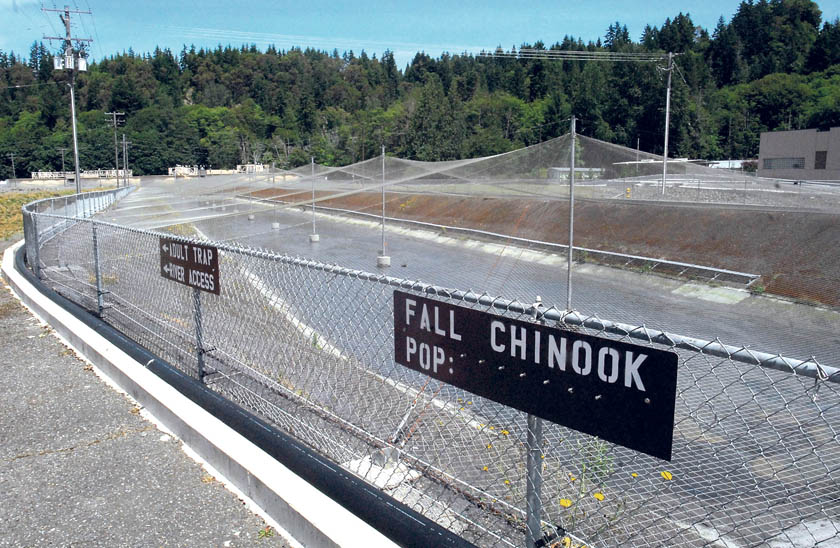PORT ANGELES — About 14,000 dead 6-month-old salmon were counted in the rearing ponds of the state Department of Fish and Wildlife’s Elwha River rearing facility after 2.6 million were released Tuesday afternoon.
“That’s higher than normal mortality would be at this time,”said Randy Aho, hatchery operations manager for the Fish and Wildlife region that stretches from the Long Beach Peninsula to the Strait of Juan de Fuca.
“I would say normal mortality [would be] a few thousand, especially with this large number.”
About 14,000 dead fish out of 2.6 million total represents a 0.5 percent mortality rate.
State-run facility
Aho said the young chinook, eager to access the salt water of the Strait of Juan de Fuca, likely injured and killed themselves banging against the sides and bottoms of the rearing ponds at the state-run facility about 3½ miles from the mouth of the river.
The deaths had nothing to do with the amount of sediment in the river or the rearing ponds, Aho said, nor did they involve fish disease.
“It’s just an unfortunate event,” Aho said.
He estimated the 14,000 fish had eaten about $200 worth of food over their six months of life.
Last April, some hundreds of year-old chinook were found along the lower banks and mouth of the Elwha following their release from the rearing facility into silt-choked river water.
April release
Facility staff had released 196,575 young fish April 5.
Department of Fish and Wildlife officials said then the amount of sediment in the river likely contributed to their deaths by damaging their gills and making it harder for them to breath.
The sediment coursing down the Elwha has been freed by the removal process for the once-towering Elwha dams, part of a $325 million river restoration project still underway.
Smolting stage
Rearing facility staff released the 2.6 million fish Tuesday afternoon once they saw that the young salmon were throwing themselves against the sides of the rearing ponds, Aho said.
The 6-month-old chinook had reached their smolting stage, he said, meaning they were ready to leave the river.
“When they reach that stage, they want to get the hell out of there,” he said.
“They want to get out to the salt water.
“By releasing them when they did, that eliminated higher mortality rates.”
Aho said staff members use fish activity level as a sign the fish are ready to be released.
Staff members had planned to release them later that evening to take advantage of a low tide, Aho said, which helps the water in the rearing ponds, and the fish therein, reach the Strait more quickly.
Cover of night
The evening was also sought so the young fish could have the cover of failing light to protect them from predators, Aho added.
The roughly pinky-finger-sized young chinook were born in Fish and Wildlife’s Sol Duc hatchery in Beaver and were trucked to the Elwha facility between March 10 and April 23, Aho said.
The 32,500 pounds of fish were transported over numerous trips, he added.
On April 5, Aho said, the Elwha River facility released 201,074 year-old chinook that experienced no mortality.
________
Reporter Jeremy Schwartz can be reached at 360-452-2345, ext. 5074, or at jschwartz@peninsuladailynews.com.

